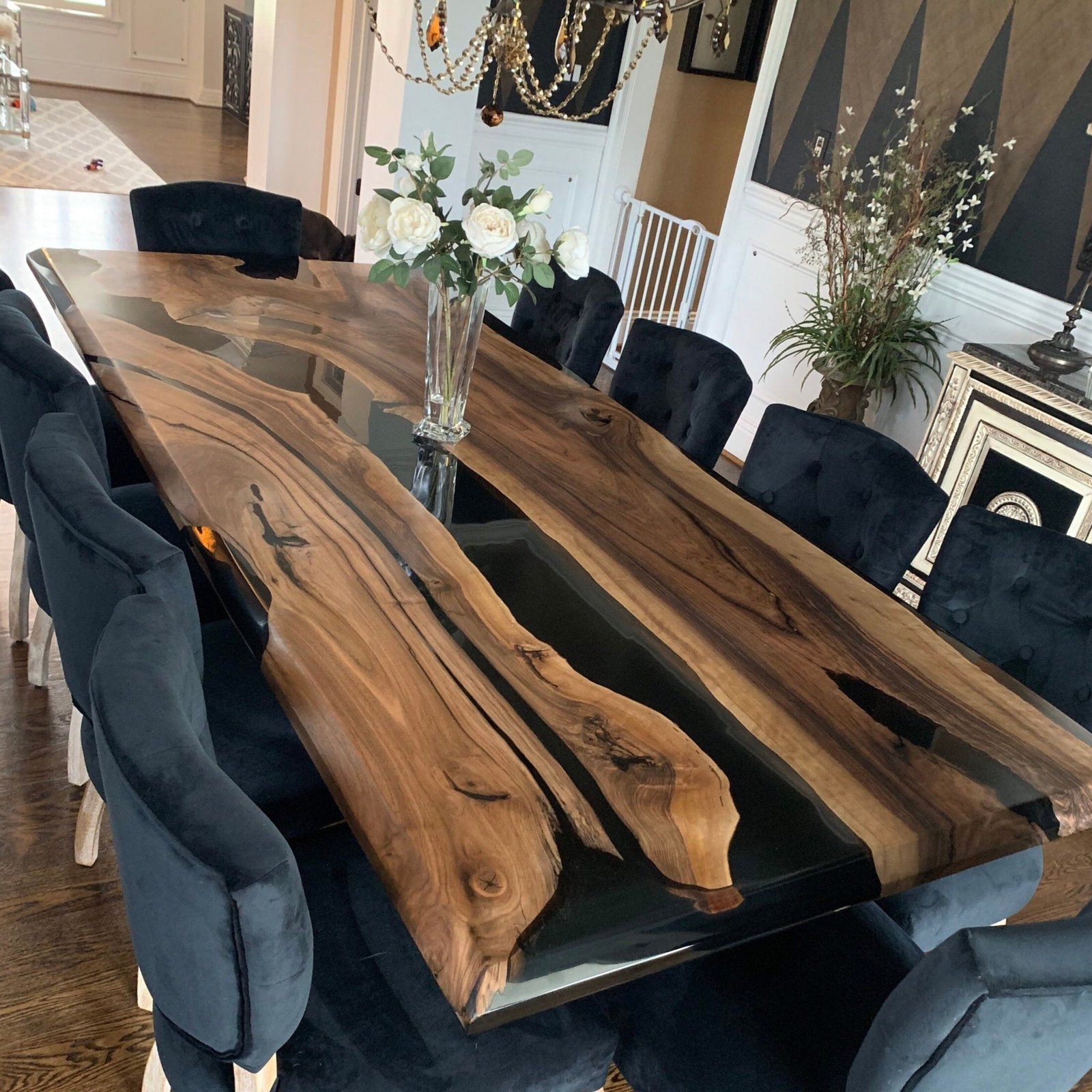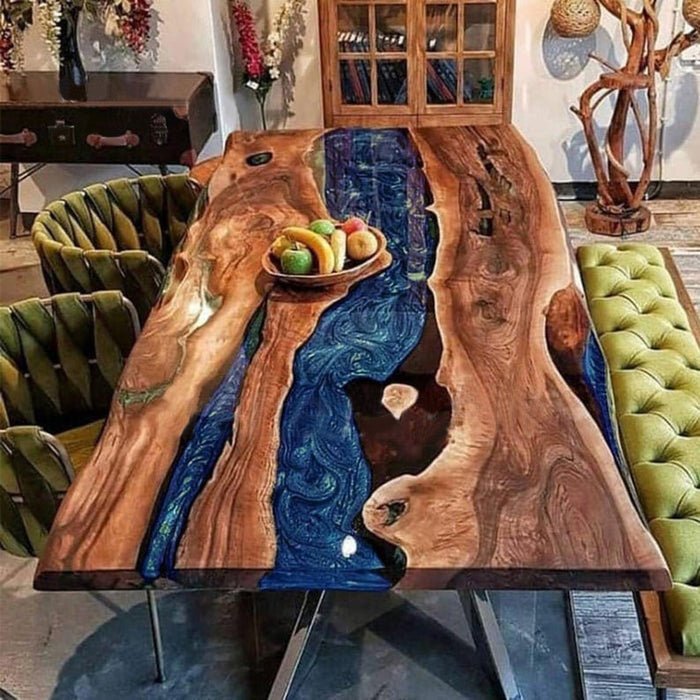Epoxy tables are not only beautiful and unique pieces of furniture, but they are also known for their durability and longevity. When investing in an epoxy table, it’s natural to wonder how long it will last and what factors contribute to its lifespan. In this blog, we’ll explore the key aspects that affect the longevity of an epoxy table and provide tips on how to ensure it remains in excellent condition for years to come.
Durability of Epoxy Resin
Epoxy resin is a strong and resilient material that, when cured, forms a hard, protective layer over the wood. This makes epoxy tables highly resistant to many common forms of damage:
- Scratch Resistance: Epoxy resin is naturally resistant to scratches, which helps maintain the table’s glossy finish over time. However, while it’s scratch-resistant, it’s not entirely scratch-proof, so proper care is still needed.
- Impact Resistance: The hardness of epoxy also makes it resistant to impacts and dents. This is particularly important in busy households or commercial settings where the table might be subject to frequent use.
- Moisture Resistance: One of the standout features of epoxy resin is its resistance to moisture. Unlike untreated wood, epoxy-coated surfaces do not absorb water, which helps prevent warping, cracking, and other moisture-related damage.
Wood Selection and Quality
The type of wood used in your epoxy table also plays a significant role in its longevity. High-quality hardwoods, such as black walnut, ash, or olive wood, are particularly durable and can extend the life of the table. When combined with epoxy, these woods create a table that not only looks stunning but is also built to last.
- Hardwoods vs. Softwoods: Hardwoods generally offer greater durability than softwoods, making them a better choice for long-lasting furniture. The combination of a tough wood base and a resilient epoxy coating is ideal for creating a table that can withstand the test of time.
- Wood Treatment: The quality of the wood treatment before applying epoxy also matters. Properly treated and cured wood is less likely to develop issues like cracking or splitting, which could otherwise compromise the table’s durability.
Environmental Factors
The environment in which your epoxy table is placed can significantly affect its lifespan. Here are some key environmental factors to consider:
- UV Exposure: While epoxy resin is durable, prolonged exposure to direct sunlight can cause yellowing or fading over time. It’s important to position your table away from direct sunlight or use UV-protective coatings to minimize this effect.
- Temperature Fluctuations: Extreme changes in temperature can affect both the epoxy resin and the wood. Keeping your table in a stable, climate-controlled environment will help prevent cracking or warping.
- Humidity Levels: High humidity can cause wood to expand, while low humidity can lead to shrinkage. Although epoxy provides some protection against these effects, maintaining consistent humidity levels in the room will help preserve the integrity of the wood.
Proper Maintenance
Regular maintenance is key to extending the life of your epoxy table. By following these maintenance tips, you can keep your table in excellent condition for many years:
- Cleaning: Regularly clean your table with a soft, damp cloth to remove dust and dirt. Avoid using harsh chemicals or abrasive cleaners that could damage the epoxy finish.
- Polishing: Periodically polish the epoxy surface with a resin-safe polish to restore its shine and protect it from minor scratches.
- Protection: Use coasters, placemats, and trivets to protect the table from hot items, spills, and potential scratches. This simple practice can prevent damage and keep the table looking new.
Repair and Refinishing
Over time, even the best-maintained tables may develop minor issues like surface scratches or dullness. Fortunately, epoxy tables can often be refinished to restore their original beauty:
- Scratch Repair: Minor scratches can be buffed out using a fine polishing compound. For deeper scratches, additional epoxy can be applied to fill in the damaged area.
- Refinishing: If your table’s surface becomes dull or worn after years of use, it can be professionally refinished. This process involves sanding down the top layer and applying a fresh coat of epoxy, making the table look as good as new.
Expected Lifespan
When properly cared for, an epoxy table can last for decades. The combination of durable materials and proper maintenance ensures that the table remains functional and beautiful over the long term. While exact lifespans can vary depending on usage and environmental factors, many epoxy tables can easily last 20 years or more with the right care.
Conclusion
An epoxy table is a long-term investment that, with proper care, can provide you with many years of enjoyment. Its durable nature, combined with the right wood selection and maintenance practices, ensures that it will remain a centerpiece in your home or office for decades. By understanding the factors that contribute to its lifespan and taking the necessary steps to protect it, you can ensure that your epoxy table retains its beauty and functionality well into the future.


